ArmyRick
Army.ca Veteran
- Reaction score
- 3,598
- Points
- 1,040
No.As anyone thought about keeping the SOF but as for the regular army units, why can’t we contract this out to a brigade Gurkha’s and use the extra troops for a kick ass RCN and RCAF.

No.As anyone thought about keeping the SOF but as for the regular army units, why can’t we contract this out to a brigade Gurkha’s and use the extra troops for a kick ass RCN and RCAF.
Spoilsport. French Foreign Legion?
Either one of them and pitch it was a new immigration policy that after 10yrs of service your granted CDN citizenship.Spoilsport. French Foreign Legion?
Honestly I see some fantastic ideas on a lot of these responses - so much so I am almost wanting to play with some hybrid combinations.
A lot of things I hadn't focused on (and I cheated the system with contractors admittedly) that could be reworked - and several different paths forward could be used from various participants.
I'm not going to go into the whole use of force issue being raised here. Let's just leave it at the fact that use of force in domestic law enforcement operations is a different kettle of fish from military use of force and ROEs in the case of hostile foreign actions taking place within Canada and the military response against them. Its more than a subtle difference and quite complex and yet another reason why one shouldn't mix the roles of civil law enforcement agencies with those of a military force.
Edit: Actually D&B may be our resident authority on hazy rules of engagement in a Civil-Military context. 50 years later and the courts are still busy, as are parliaments.
Shoot, Shovel, ShutUp...I'm not sure that we can divide things that cleanly when our enemies are choosing to fight us by all means available. We can be met with military force employed by criminal gangs mixing Canadians, foreign civilians and foreign military in and out of uniform. What laws do we follow then?
I would agree to a point, I think conflicts will start that way - the question will be at what point do they end.As I said before, I believe our future looks more like the 1885 Rebellion. All over the world. The last thing I expect these days is a stand up fight on even terms.
The 90's where some of the worst times for CF ROE, lots of TERRIBLE JAG Advice that was contrary to what the CCC allowed for self defense (more restrictive) and a lot of misunderstand of what self defense is in various CoC.Edit: Actually D&B may be our resident authority on hazy rules of engagement in a Civil-Military context. 50 years later and the courts are still busy, as are parliaments.
I've had the same thoughts. For me the biggest two areas that I'd like to see altered in the scenario are the moving all of the reserves to some civil defence force and not making them available for military service, the rather generous ability to acquire pretty much any equipment you want and not being involved in international operations. Essentially I'd like to deal with a major reduction in the annual costs of DND by the reduction of full-time pay packets.

JTF-2 was born from and trained by the RCMP SERT, police officers who already had a pretty good handle on DOMOPS ROE. The CF had a good understanding of OUTCAN ROE as we'd been playing that game since the 1970's in Cyprus. The biggest challenge was making the bridge between the worlds and understanding that just because the ROE say you can shoot someone doesn't mean you should.The creation of JTF-2 actually significantly helped the entire CF figure out ROE IMHO - as the need for understanding the legalities/consequences/responsibilities of the application of lethal force inside Canada by a CF entity had to be understood - and that understanding eventually spread outside DHTC.
Not exactly 100% - there where a bunch of folks who went to England to learn the trade from the Horses Mouth on top of that.JTF-2 was born from and trained by the RCMP SERT, police officers who already had a pretty good handle on DOMOPS ROE.
I will disagree there entirely - Cyprus gave the CF the belief they knew what their where doing with ROE - how screwed up that was, was only really identified in FYR deployments - and Somalia. I still believe to this day, that there are many members of the CAF who doesn't truly understand what self defense is, and what their legal rights are under that from an ROE standpoint.The CF had a good understanding of OUTCAN ROE as we'd been playing that game since the 1970's in Cyprus. The biggest challenge was making the bridge between the worlds and understanding that just because the ROE say you can shoot someone doesn't mean you should.
Suspension of Disbelief - you need to accept the DS conditionsWith the wholesale divestment of the Reserves and many other capabilities to the civilian sector and the ongoing militarization of civilian law enforcement in this scenario, I'm surprised that the Woke Party didn't table /pass some type of Posse Comitatus Act.
Shortly after being poured out of the School of Artillery as a freshly minted gun position officer, my regiment was sent off to the Octoberfest in Montreal. I recall standing in a hangar at St Hubert with around another 500 soldiers listening to a JAG officer at the front of the assemblage drone on for about 20 minutes with something most of us couldn't hear. It was a "what the f--- was that all about moment" for most of us. It seemed we'd just been briefed on the ROE. Our next stop was to draw live ammunition before hitting the streets. No soldiers cards, no meetings in small groups to discuss, no training - just 20 minutes of unintelligible droning on.JTF-2 was born from and trained by the RCMP SERT, police officers who already had a pretty good handle on DOMOPS ROE. The CF had a good understanding of OUTCAN ROE as we'd been playing that game since the 1970's in Cyprus. The biggest challenge was making the bridge between the worlds and understanding that just because the ROE say you can shoot someone doesn't mean you should.
Believe it or not by the 1990's the whole ROE thing had improved a lot. At the end of the day, ROE are not a JAG thing; its a chain of command thing. After the - "shoot all the Commies you want" - 4 CMBG in Europe thing and entering into Yugoslavia, people started taking an interest. It was a bit of a confusing time as we had to deal with UN processes as much as Canadian ones and there was a long time debate within the various countries about the legality of using deadly force to protect property.The 90's where some of the worst times for CF ROE, lots of TERRIBLE JAG Advice that was contrary to what the CCC allowed for self defense (more restrictive) and a lot of misunderstand of what self defense is in various CoC.
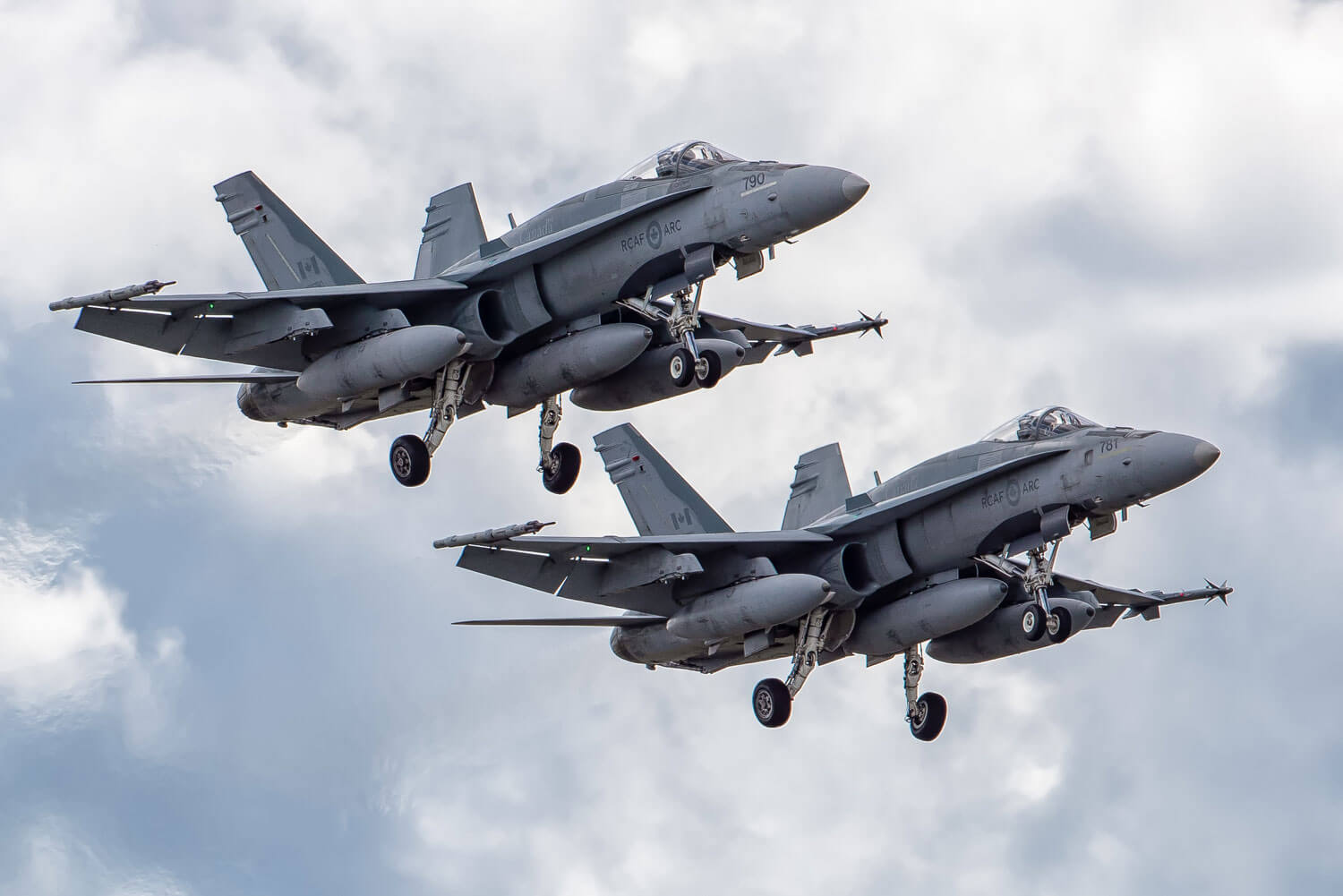
As part of NAV CANADA’s ongoing readiness training, the company organised the drill with NORAD. During the exercise, NAV CANADA cleared the airspace over parts of Toronto and the Greater Toronto Area and coordinated with the Greater Toronto Airports AuthorityOpen a new window and military command and control units from the Royal Canadian Air ForceOpen a new window and United States Air ForceOpen a new window.
Erik Doucet, Manager of Military Coordination and Special Events at NAV CANADA, says these types of international training exercises are necessary to ensure seamlessly coordinated responses in the event of real aerospace threats.
“Employees at NAV CANADA are a key component of all NORAD missions in Canada,” says Doucet. “As we are often the first to identify irregular aircraft movements, NAV CANADA plays an important role in these types of training missions.”
The exercise, known as AMALGAM HAWK 20-01, was part of Operation NOBLE EAGLEOpen a new window. Developed by NORAD after the terrorist attacks of September 11, 2001, NOBLE EAGLE is an extensive air defence effort to protect against similar types of attacks within North American airspace.
Operations requiring decisions
During your first 180 days in office, you will be asked to renew several key operations. You have the authority to extend some of these, but others will require Cabinet approval or concurrence from other Ministers.
- You may be required to make decision on ongoing operations such as Operation NOBLE EAGLE, which seeks to address asymmetric aerial threats within Canadian and US airspace. You are identified as the designated Engagement Authority/decision-maker if the Prime Minister is unavailable. Given the reactive nature of this operation, it is unlikely but possible that it could be triggered at any time.


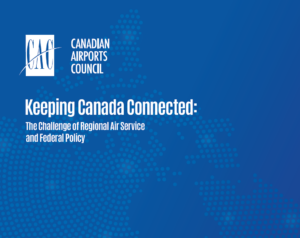

Starting in 1992, the Government of Canada transferred the operations of Canada’s National Airports Systems Airports (those with more than 200,000 passengers annually and/or serving a national, provincial or territorial capital) to private nonshare capital corporations.
Today these locally-operated airport authorities are a Canadian success story, serving passengers in every part of the country and, since 1992, reinvesting over $25 billion into capital improvement programs.
Nav Canada (styled as NAV CANADA) is a privately run, not-for-profit corporation that owns and operates Canada's civil air navigation system (ANS). It was established in accordance with the Civil Air Navigation Services Commercialization Act (ANS Act).

Canada and North America
Name Description Fisheries Patrols Canadian Armed Forces (CAF) support to help Fisheries and Oceans Canada monitor fishing vessels and enforce fishing regulations in the Atlantic Ocean. The CAF conducts ship and aircraft patrols with DFO officials on board. These are known as FISHPATS. Operation BOXTOP CAF mission to bring supplies to Canadian Forces Station Alert. Operation DRIFTNET CAF mission to stop drift netting and other forms of illegal fishing. Operation LASER CAF response to a worldwide pandemic situation. Operation LENTUS CAF response to forest fires, floods and natural disasters in Canada. Operation LIMPID CAF mission to detect threats to Canada’s security as early as possible. The CAF keeps a routine watch over Canada’s air, maritime, land, space, and cyber domains. It also maintains a physical presence in some areas. Operation NANOOK CAF contribution to whole-of-government sovereignty patrols and security exercises. These are usually held in the high and eastern Arctic. Operation NEVUS CAF annual maintenance of the High Arctic Data Communications System. It takes place on Ellesmere Island. Operation PALACI CAF support to the Parks Canada program to prevent avalanches from blocking land routes in Rogers Pass. Operation SABOT CAF support to the Royal Canadian Mounted Police. The mission is to help stop the illegal growing of marijuana in Canada. Operation VECTOR Operation VECTOR is the Canadian Armed Forces’ (CAF) support to the Federal, Provincial, and Territorial governments for the distribution of COVID-19 vaccines. Search and Rescue The CAF has the main responsibility in Canada for providing search and rescue (SAR) from the air. It also coordinates the national response for air and maritime SAR. National Sentry Program The National Sentry Program reinforces Canada’s commitment to remember and honour those Canadians who served in the major wars of the twentieth century, including both World Wars, as well as those who have contributed to Canada’s long-standing tradition of military excellence through to the present day.
Central and South America
Name Description Operation CARIBBE CAF support to U.S.-led Enhanced Counter-narcotics operations. CAF sends ships and aircraft to help stop trafficking by organized crime. The operation takes place in the Caribbean basin and the eastern Pacific Ocean.
Europe
Name Description Operation DISTINCTION Operation DISTINCTION supports the Government of Canada’s Military History Commemoration Program to complement and enhance Veterans Affairs Canada (VAC) selected ceremonies and commemorative events. Operation IGNITION CAF periodic role in a NATO security mission for Iceland. Mission involves airborne surveillance and interception. Operation ILLUMINATION CAF support to Iceland while their country’s air surveillance radars underwent scheduled maintenance and upgrades. Operation KOBOLD CAF contribution to the NATO Kosovo Force (KFOR). Operation OPEN SPIRIT CAF role to help clear explosive remnants of war in the Baltic Sea. A number of other countries take part. The annual mission is hosted by the three Baltic nations. Operation REASSURANCE CAF support to NATO’s defence and deterrence measures in Central and Eastern Europe. Operation SNOWGOOSE CAF role in the United Nations Force in Cyprus (UNFICYP). Operation UNIFIER CAF military training and capacity-building operation in Ukraine.
Africa
Name Description Operation EDIFICE-Tunisia Once a year, the CAF conducts combined training with the Tunisian Navy. Operation CROCODILE CAF role in supporting the United Nations mission in the Democratic Republic of the Congo. Operation FREQUENCE CAF strategic airlift support to France between France and the Sahel region of Africa. Operation NABERIUS CAF mission in Niger to train the Forces armées nigériennes Operation PRESENCE The CAF’s contribution to the Government of Canada’s peace operations strategy. Operation PROJECTION The CAF operates in maritime enviroments around the world to improve peace and stability. Operation SOPRANO CAF role in the United Nations Mission in the Republic of South Sudan (UNMISS).
Middle East
Name Description Operation ARTEMIS CAF maritime security and counter-terrorism operations in the Arabian Sea. Operation CALUMET CAF role in the Multinational Force and Observers (MFO) in the Sinai Peninsula of Egypt. Operation FOUNDATION CAF role in United States Central Command Headquarters, United States Air Forces Central Headquarters, and Combined Maritime Forces Headquarters. Operation IMPACT CAF role in the international coalition to assist local security forces who are fighting against Daesh in the Republic of Iraq and in Syria. Operation JADE CAF role in the United Nations Truce Supervision Organization (UNTSO). Operation PROTEUS CAF role in the Office of the U.S. Security Coordinator to build security capacity in the Palestinian Authority.
Indo-Pacific
Name Description Operation AEGIS Operation AEGIS is the Canadian Armed Forces’ (CAF) contribution to the Government of Canada’s effort to evacuate Afghans with significant and/or enduring relationship with the Government of Canada, along with their accompanying family members. Operation NEON Operation NEON is Canada’s contribution to a coordinated multinational effort to support the implementation of United Nations Security Council sanctions imposed against North Korea. Operation PROJECTION The CAF operates in maritime environments around the world to improve peace and stability. Operation RENDER SAFE CAF role to help Australia clear explosive remnants of war in the Solomon Islands. Operation DRIFTNET CAF support to Fisheries and Oceans Canada. The mission was to help enforce the global moratorium on high-seas driftnet fishing.
Around the world
Name Description Operation GLOBE CAF members are sometimes asked to help other Government of Canada departments with various tasks. When these tasks involve working outside of Canada, CAF members deploy under Operation GLOBE. Operation PROJECTION The CAF operates in maritime environments around the world to improve peace and stability. Operation RENAISSANCE The Canadian Armed Forces responds to international emergencies. Operation VECTOR Operation VECTOR is the Canadian Armed Forces’ (CAF) support to the Federal, Provincial, and Territorial governments for the distribution of COVID-19 vaccines.
Joint Military Exercises
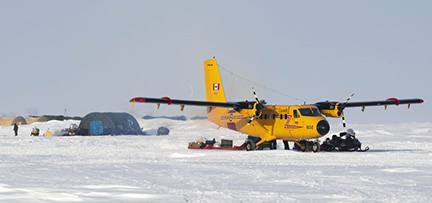
Exercise ARCTIC EDGE
Arctic Region
Alaska, USA.
Next Iteration: February/March 2022.
Exercise ARCTIC EDGE is the premier US Arctic training event. It is sponsored by North American Aerospace Defense Command (NORAD) and United States Northern Command (N&NC). Ex AE is planned and delivered by United States Alaska Command (ALCOM).
Canadian Participation:
The CAF will focus on improving the Canadian-United States (CANUS) military alliance and its ability to operate as an effective team in an austere Arctic environment.
CANUS and our allied partners will showcase Canada’s commitment to safeguarding security in the Arctic region. Ex AE22 supports Arctic combat-related research and development, and practices Northern defence strategies.
For more information: Arctic Edge 2020. This website features stories and imagery on the Defense Visual Information Distribution Service.

Exercise COALITION WARRIOR (CWIX)
North American Region
Norfolk, Virginia.
European Region
Poland.
Current Iteration: Ongoing throughout 2021.
The Coalition Warrior Interoperability eXploration, eXperimentation, eXamination, eXercise (CWIX) is an annual NATO program testing the ability of partners' online networks, computer systems and software to “talk to each other”, which allows the reliable exchange and use of shared information. CWIX is led by Headquarters Supreme Allied Commander Transformation (HQ SACT) on behalf of the North Atlantic Council (NAC) and the NATO Military Committee (MC).
Canadian Participation:
Canada, along with multiple other NATO nations, test current, near-term, experimental, and future networking capabilities that allow military commanders to communicate globally and make timely decisions. CWIX supports military readiness by emphasizing preparation for NATO missions.
For more information: CWIX in 2021. This website is maintained by Allied Command Transformation (ACT), at NATO's Warfare Development Command.
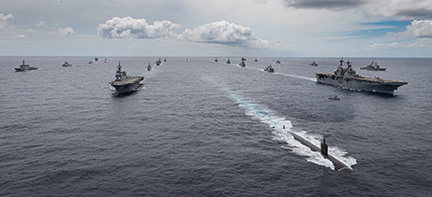
Exercise RIM OF THE PACIFIC (RIMPAC)
Pacific Region
Hawaiian Islands & Southern California, USA.
Next Iteration: Summer 2022.
Ex RIMPAC is the world’s largest international maritime exercise comprised of nations with an interest in the Pacific Rim region. This exercise takes place every other year and is conducted by Commander U.S. Third Fleet (C3F). RIMPAC provides a training opportunity for multiple nations, by building a coalition of capable, adaptive partners. RIMPAC improves partner nation readiness to respond to a wide-range of potential operations.
Canadian Participation:
Participation focuses on the ongoing building of CAF military expertise in the Indo-Pacific region, while fostering multinational relationships and trust, thus increasing the CAF’s proficiency to work with our partners whenever and however needed.
For more information visit the U.S. Pacific Fleet’s website to learn about RIMPAC’s most recent iteration in 2020. RIMPAC.
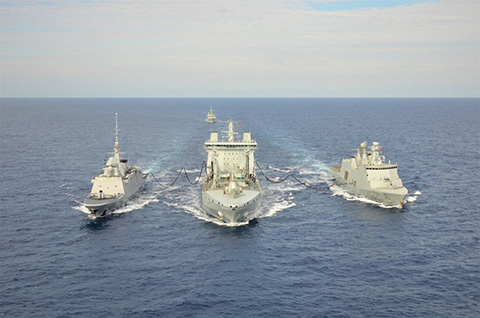
Exercise STEADFAST DEFENDER
European Region
Most Recent Iteration: May 2021.
Exercise STEADFAST DEFENDER 21 was the first in a new series of long-planned NATO exercises designed to ensure NATO forces are trained, aligned to operate collectively, and ready to respond to threats. This exercise demonstrates how North America and Europe work together, keeping our nations safe in a challenging security environment.
Canadian Participation:
CAF participation in Ex STEADFAST DEFENDER 21 showed Canada’s commitment to NATO, its willingness to protect the European region and deter aggressors. CAF operational objectives included exercising command structures and improving the ability to operate effectively together to achieve assigned tasks within a NATO coalition maritime security context.
A frigate, Her Majesty’s Canadian Ship (HMCS) HALIFAX, was recently deployed on Ex STEADFAST DEFENDER.
For more information: Exercise Steadfast Defender [PDF, 309KB] is found at NATO’s Exercises and Training website to find out about the last iteration in 2021.
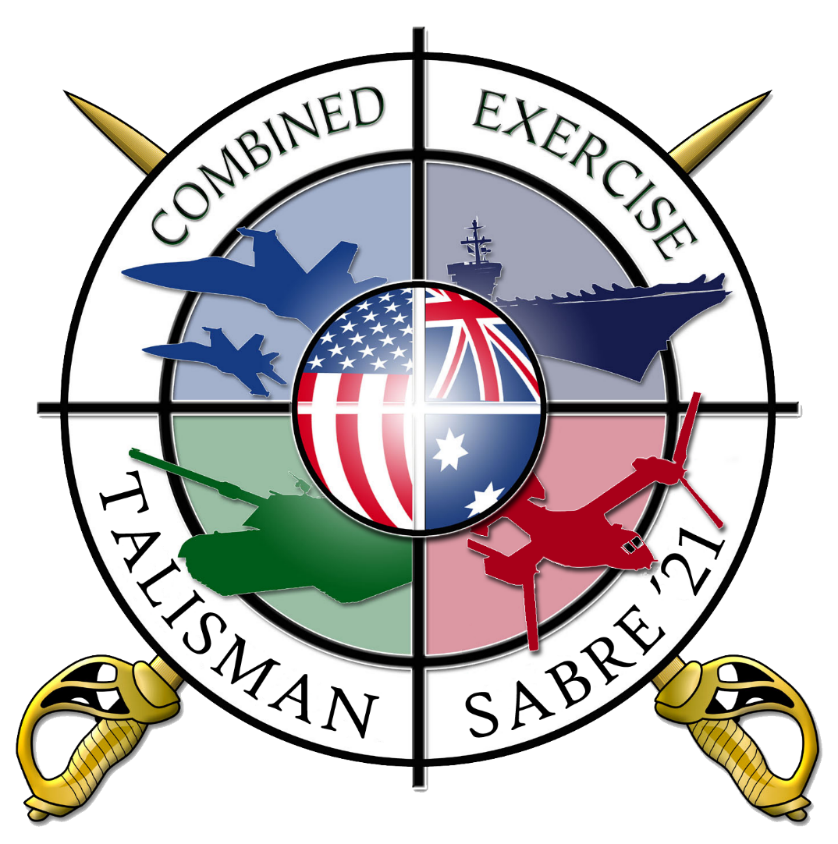
Exercise TALISMAN SABRE (Ex TS)
Indo-Pacific Region
Australia.
Latest Iteration: July 18 to 31, 2021.
Exercise TALISMAN SABRE (Ex TS) takes place every other year, and is a collaborative Australian/United States exercise taking place in North East Australia.
The Canadian Armed Forces (CAF) will train with Australia, United States, New Zealand, Japan, United Kingdom, and the Republic of Korea, contributing to stability and security in the Indo-Pacific region.
Canadian Participation:
The CAF’s participation in Ex TS21 included:
Visit the Australian Defence Force website to learn about Ex TS’s most recent iteration in 2021. Ex TS in 2021
- Her Majesty’s Canadian Ship (HMCS) CALGARY, a Halifax-class frigate.
- CAF provided 13 personnel to enhance joint capabilities by working alongside allies within a Combined Joint Task Force Headquarters and Air Operations Centre.
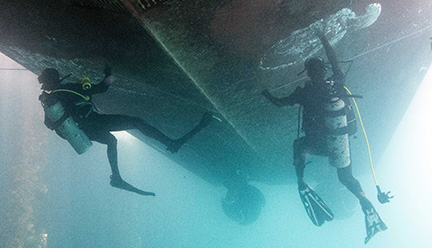
Exercise TRADEWINDS (Ex TW)
Caribbean region
Most Recent Iteration: June 2021, in Guyana.
Exercise TRADEWINDS 2021 (Ex TW21) is an annual U.S. Southern Command (USSOUTHCOM) exercise. It focuses on countering threats, building partnerships and improving Humanitarian Assistance and Disaster Relief (HADR) capabilities.
Exercise TRADEWINDS promotes and strengthens regional safety and security in the Caribbean region.
Canadian Participation:
The CAF’s participation in Ex TW21 included:
For more information: U.S. Southern Command’s Ex TW21 website.
- Her Majesty’s Canadian Ship (HMCS) SHAWINIGAN, a Maritime Coastal Defence Vessel (MCDV), joined a multinational group aimed at improving tactics, techniques and procedures for tracking, intercepting, and boarding suspect vessels.
- Ten CAF members were in Guyana, serving as instructors and mentors for the operational planning and execution of maritime and land security operations, dive operations, public affairs best practices, and the establishment of a Caribbean Task Force headquarters to conduct effective security operations.
Fourteen wings are located across Canada, from Gander, Newfoundland, to Comox, British Columbia. The Wings conduct Air Force operations under the direction of 1 Canadian Air Division/CANR. Ten Wings also include a Canadian Forces Base along with other operational and support units.
1 Wing Kingston The home of the Griffon and Chinook helicopters. It provides airlift support of troops and equipment anywhere in the world. Its seven tactical helicopter and training squadrons are spread out across the country. 2 Wing Bagotville The Royal Canadian Air Force’s air expeditionary wing, a formation able to rapidly deploy as a self-contained unit, employing air power and providing associated support wherever needed, across Canada or around the world. 3 Wing Bagotville Located in Quebec's Saguenay region. It provides general purpose, multi-role, combat capable forces in support of domestic and international roles of Canada's Air Force. It also provides search and rescue missions. 4 Wing Cold Lake The busiest fighter base in Canada. It provides general purpose, multi-role, combat capable forces in support of domestic and international roles of Canada's Air Force. Home of fighter pilot training for the Canadian Forces, 4 Wing attracts Top Gun crews from all over the world to our annual air combat exercise, Maple Flag. 5 Wing Goose Bay The mission of 5 Wing Goose Bay is to conduct NORAD and other Canadian Armed Forces operations. As the Eastern gateway to the Canadian Arctic, its strategic location enables 5 Wing to play a key role in protecting the sovereignty of Canada and in the air defence of North America. Their location and the challenging airspace and terrain on and above Labrador and Quebec also allows 5 Wing Goose Bay to offer an outstanding environment for the conduct of joint and combined training for the Canadian Armed Forces, NATO partners and our allies. 8 Wing Trenton The hub of Canada's air mobility forces - from delivering supplies to the high Arctic (Canadian Forces Station (CFS) Alert) to airlifting troops and equipment worldwide. It is also responsible for search and rescue in central Canada and home to the famous Skyhawks with the Canadian Parachute Centre. 9 Wing Gander Home of the 103 Search and Rescue (SAR) Squadron, providing full-time SAR services to Newfoundland and Labrador. When a call for help comes in, SAR crews at 9 Wing Gander are ready to head out in any direction from their base in Canada's most easterly province, Newfoundland. 12 Wing Shearwater The centre of naval aviation in Canada. Home of the CH-148 Cyclone helicopter, 12 Wing supports the Navy with up to nine helicopter air detachments for international and domestic operations. 14 Wing Greenwood Nestled in the heart of Nova Scotia's beautiful Annapolis Valley. Aurora crews conduct sovereignty and surveillance missions over the Atlantic Ocean routinely, while search and rescue capabilities are maintained 365 days of the year. 15 Wing Moose Jaw The site of the new NATO Flying Training Program in Canada (NFTC). This southern Saskatchewan town is also home to the Snowbirds, Canada's world famous aerobatic team. 16 Wing Borden The "Birthplace of the RCAF." The largest training Wing in the Canadian Forces, 16 Wing's schools offer air force technical training and professional development. 17 Wing Winnipeg Comprises three squadrons and six schools. It also provides support to the Central Flying School. All combined, 17 Wing turns out what are considered some of the best air navigators and multi-skilled personnel in the world. For Canadian air force personnel, all roads will lead to 17 Wing Winnipeg. 19 Wing Comox Based on Vancouver Island. Its Aurora crews keep watch over the Pacific Ocean while its search and rescue teams regularly locate downed Aircraft in some of Canada's roughest terrain while another squadron helps train fighter pilots in tactical procedures. 22 Wing North Bay Also known as the Canadian Air Defence Sector (CADS), is responsible for providing surveillance, identification, control and warning for the aerospace defence of Canada and North America at the Sector Air Operations Centre.
The Commander of 2 CAD is accountable to the Commander of the RCAF and provides:
- Oversight of RCAF individual education and training, including ab-initio training for most RCAF occupations,
- Oversight of core RCAF developmental courses, and
- Support to the overall RCAF training management.
The formations under the Commander of 2 CAD include 15 Wing Moose Jaw, 16 Wing Borden and 17 Wing Winnipeg. In addition, the Canadian Forces Aircrew Selection Centre located in Trenton, ON also reports directly to the Commander of 2 CAD.
1 Wing (Tactical Helicopters - CH-146 and CH-147)
2 Wing (Air Expeditionary Wing - non-flying)
3 Wing (NORAD - CF-188 and CH-146)
- 425 Tactical Fighter Squadron
- 433 Tactical Fighter Squadron
- 439 Combat Support Squadron
- 3 Air Maintenance Squadron
- 12 Radar Squadron
- 3 Wing Air Reserve Flight
- Forward Operating Location Iqaluit
4 Wing (NORAD - CF-188, CH-146 and CT-155)
- 401 Tactical Fighter Squadron
- 409 Tactical Fighter Squadron
- 410 Tactical Fighter Operational Training Squadron
- 417 Combat Support Squadron
- 419 Tactical Fighter Training Squadron
- 1 Air Maintenance Squadron
- 42 Radar Squadron
- 10 Field Technical Training Squadron
- 4 Wing Air Reserve Flight
- Forward Operating Location Inuvik
- Forward Operating Location Yellowknife
5 Wing (NORAD - CH-146)
- 444 Combat Support Squadron
- 5 Wing Air Reserve Flight
- Forward Operating Location Goose Bay
8 Wing (Transport - CC-144, CC-150, CC-177, CC-130J, CC-130H, CC-138, CH-146, King Air BE350)
- Canadian Forces Station Alert, Nunavut
- 412 Transport Squadron (at Ottawa)
- 424 Transport and Rescue Squadron
- 426 Transport Training Squadron
- 429 Transport Squadron
- 436 Transport Squadron
- 437 Transport Squadron
- 440 Transport Squadron (at Yellowknife)
- Multi-Engine Utility Flight
- 2 Air Movements Squadron
- 8 Air Maintenance Squadron
- 8 Wing Air Reserve Flight
12 Wing (Maritime Helicopters - CH-148)
14 Wing (Coastal - CP-140, CC-130J, CC-130, CC-295, CH-149)
- 404 Long Range Patrol and Training Squadron
- 405 Long Range Patrol Squadron
- 413 Transport and Rescue Squadron
- 415 Long Range Patrol Force Development Squadron
- 14 Air Maintenance Squadron
- 14 Construction Engineering Squadron (at Bridgewater)
- 91 Construction Engineering Flight (at Gander)
- 143 Construction Engineering Flight (at Lunenburg)
- 144 Construction Engineering Flight (at Pictou)
- 14 Wing Air Reserve Flight
19 Wing (Coastal - CP-140, CC-130H, CC-285, CH-149, (CC-115))
- 407 Long Range Patrol Squadron
- 418 Search and Rescue Operational Training Squadron
- 435 Transport and Rescue Squadron (Winnipeg)
- 442 Transport and Rescue Squadron
- 19 Air Maintenance Squadron
- Canadian Forces School of Search and Rescue (at Comox)
- 192 Construction Engineering Flight (Abbotsford)
- 19 Wing Air Reserve Flight
22 Wing (NORAD - non-flying)
15 Wing (Training - CT-114, CT-155, CT-156, Grob 120A, C-90B, Bell 412 CF, CH-139)
- 2 Canadian Forces Flying Training School (Moose Jaw, SK)
- 3 Canadian Forces Flying Training School (Portage la Prairie, MB)
- 15 Air Traffic Control
- 431 Air Demonstration Squadron (CF Snowbirds) (Moose Jaw, SK)
16 Wing (Training - non-flying)
17 Wing (Training - CT-142)
- 402 Squadron
- 17 Wing Air Reserve Flight
- RCAF Band
- RCAF Barker College (formerly CFSAS)
- Canadian Forces School of Survival and Aeromedical Training (CFSSAT)
22 Wing (NORAD - non-flying)
3 Wing (NORAD - CF-188 and CH-146)
- 425 Tactical Fighter Squadron
- 433 Tactical Fighter Squadron
- 439 Combat Support Squadron
- 3 Air Maintenance Squadron
- 12 Radar Squadron
- 3 Wing Air Reserve Flight
- Forward Operating Location Iqaluit
4 Wing (NORAD - CF-188, CH-146 and CT-155)
- 401 Tactical Fighter Squadron
- 409 Tactical Fighter Squadron
- 410 Tactical Fighter Operational Training Squadron
- 417 Combat Support Squadron
- 419 Tactical Fighter Training Squadron
- 1 Air Maintenance Squadron
- 42 Radar Squadron
- 10 Field Technical Training Squadron
- 4 Wing Air Reserve Flight
- Forward Operating Location Inuvik
- Forward Operating Location Yellowknife
8 Wing (Transport - CC-144, CC-150, CC-177, CC-130J, CC-130H, CC-138, CH-146, King Air BE350)
- Canadian Forces Station Alert, Nunavut
- 412 Transport Squadron (at Ottawa)
- 424 Transport and Rescue Squadron
- 426 Transport Training Squadron
- 429 Transport Squadron
- 436 Transport Squadron
- 437 Transport Squadron
- 440 Transport Squadron (at Yellowknife)
- Multi-Engine Utility Flight
- 2 Air Movements Squadron
- 8 Air Maintenance Squadron
- 8 Wing Air Reserve Flight
1 Wing (Tactical Helicopters - CH-146 and CH-147)
12 Wing (Maritime Helicopters - CH-148)
14 Wing (Coastal - CP-140, CC-130J, CC-130, CC-295, CH-149)
- 404 Long Range Patrol and Training Squadron
- 405 Long Range Patrol Squadron
- 413 Transport and Rescue Squadron
- 415 Long Range Patrol Force Development Squadron
- 14 Air Maintenance Squadron
- 14 Construction Engineering Squadron (at Bridgewater)
- 91 Construction Engineering Flight (at Gander)
- 143 Construction Engineering Flight (at Lunenburg)
- 144 Construction Engineering Flight (at Pictou)
- 14 Wing Air Reserve Flight
19 Wing (Coastal - CP-140, CC-130H, CC-285, CH-149, (CC-115))
- 407 Long Range Patrol Squadron
- 418 Search and Rescue Operational Training Squadron
- 435 Transport and Rescue Squadron (Winnipeg)
- 442 Transport and Rescue Squadron
- 19 Air Maintenance Squadron
- Canadian Forces School of Search and Rescue (at Comox)
- 192 Construction Engineering Flight (Abbotsford)
- 19 Wing Air Reserve Flight
15 Wing (Training - CT-114, CT-155, CT-156, Grob 120A, C-90B, Bell 412 CF, CH-139)
- 2 Canadian Forces Flying Training School (Moose Jaw, SK)
- 3 Canadian Forces Flying Training School (Portage la Prairie, MB)
- 15 Air Traffic Control
- 431 Air Demonstration Squadron (CF Snowbirds) (Moose Jaw, SK)
16 Wing (Training - non-flying)
17 Wing (Training - CT-142)
- 402 Squadron
- 17 Wing Air Reserve Flight
- RCAF Band
- RCAF Barker College (formerly CFSAS)
- Canadian Forces School of Survival and Aeromedical Training (CFSSAT)
5 Wing (NORAD - CH-146)
- 444 Combat Support Squadron
- 5 Wing Air Reserve Flight
- Forward Operating Location Goose Bay
2 Wing (Air Expeditionary Wing - non-flying)
22 Wing (NORAD - non-flying)
19 Wing (Coastal - CP-140)
8 Wing (Transport - CC-144, CC-150, CC-177, CC-130J)
1 Wing (Tactical Helicopters - CH-146 and CH-147)
12 Wing (Maritime Helicopters - CH-148)
15 Wing
16 Wing
17 Wing
2 Wing (Air Expeditionary Wing - non-flying)
That's concerning.Believe it or not by the 1990's the whole ROE thing had improved a lot.
The JAG does give legal advice to the CoC though. Some of that advice has been absolutely deplorable.At the end of the day, ROE are not a JAG thing; its a chain of command thing. After the - "shoot all the Commies you want" - 4 CMBG in Europe thing and entering into Yugoslavia, people started taking an interest. It was a bit of a confusing time as we had to deal with UN processes as much as Canadian ones and there was a long time debate within the various countries about the legality of using deadly force to protect property.
Everyone still has the right to Self Defense - at times, the CoC, the UN etc all where failing miserably in that - and the explanation of what that actually allowed soldiers to do.It's important to remember at all times that ROE in every case below full out war, are as much a small "p" political and policy thing as a military thing. Very few soldiers on the ground are happy with ROE that have motives beyond the immediate situation he is facing. The soldier's "golden ticket" in every ROE is the self defence rule. Beyond that ROEs are carefully crafted by a committee to limit all out mayhem with the aim of not hamstringing the commander on the ground from accomplishing his mission ... and you know what I think about anything crafted by a committee in Ottawa. I also agree that all too often our CoC has trouble interpreting ROEs and prefers to err on the side of caution.
Consider this scenario: Circa 1994-5Sometimes what the grunt on the ground considers terrible legal advice is in fact an accurate explanation of the probable or possible legal consequences resulting from a particular action. Our leadership is not known for taking bold positions when the outcomes are questionable.


